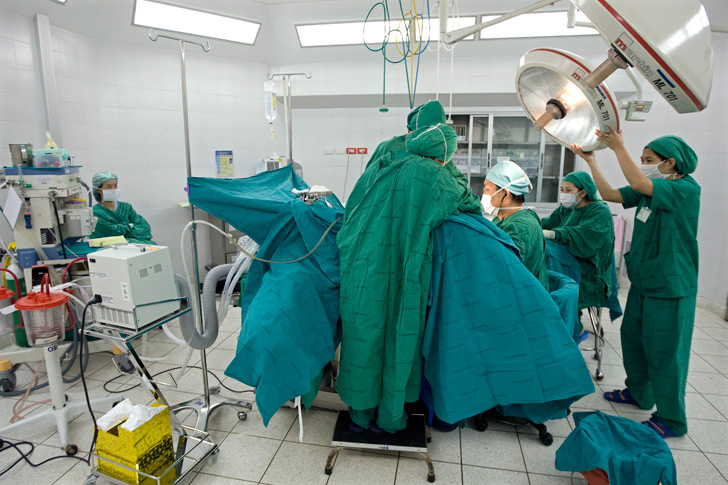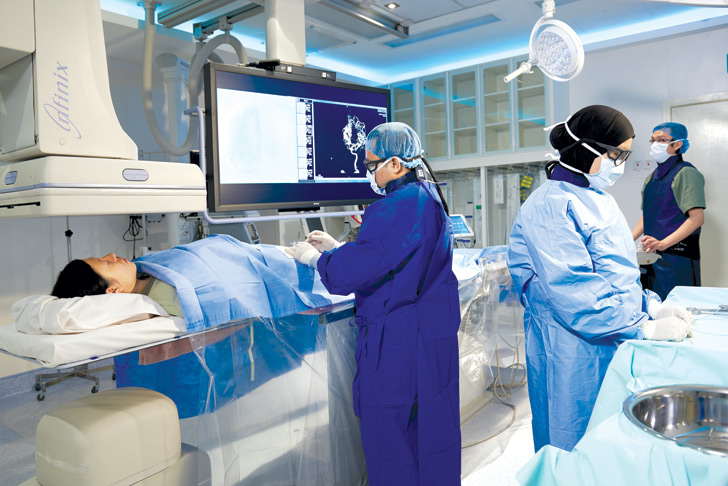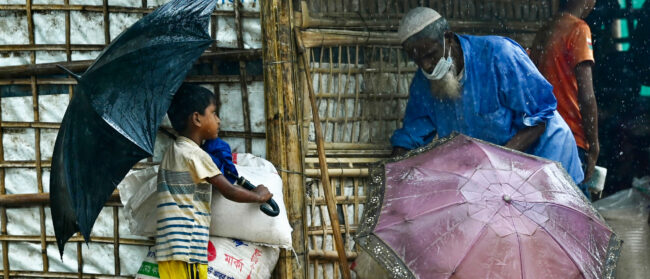Every year, Indonesians leave their country in droves to access basic medical services they can’t find in their own country. According to media reports, the Indonesian government estimates that its citizens spend roughly $11.5 billion a year on healthcare abroad – much of it in Malaysia.
“What some Indonesian medical tourists are looking for is everyday care they can’t get back home,” said Meghann Ormond, a professor of cultural geography at Wageningen University in the Netherlands. “This oftentimes has a lot to do with a lack of access to quality medication or cutting edge technology – lab analyses, for example. They don’t have access in Indonesia to doctors they trust. That’s why they’re crossing the borders.”
However, it’s not just Indonesians who are traversing the region to seek medical care they cannot find at home.
Globally, medical tourism is huge, and Southeast Asia is an industry hotspot. Patients Beyond Borders, a US-based organisation that tracks trends in medical tourism worldwide, estimates that the global market is expanding by up to 25% each year and is worth upwards of $55 billion annually with more than 11 million consumers – nearly a third of whom are travelling to Southeast Asia.
Contrary to popular belief, though, many of Southeast Asia’s medical tourists come from within the region itself. Patients Beyond Borders estimates that Malaysia attracts more than 640,000 medical tourists from Southeast Asia each year; when compared to figures from the country’s health ministry, an estimate of 200,000 medical arrivals from outside the region can be extrapolated. Thailand follows with 550,000 intra-Asean medical tourists and then comes Singapore with 400,000.
There are the conventional reasons why Southeast Asians are travelling for healthcare: cost, shorter wait times for procedures, access to treatments unavailable in one’s home country and the added bonus of cheap travel. But sometimes people are travelling for medical care simply because they have no other choice.
“What’s emerging is south-to-south travel, from developing country to developing country,” said Ghazali Bin Musa, a professor of business strategy and policy at the University of Malaya.
“Most medical tourists in the region are coming from neighbouring countries – Laos to Thailand, for example. Cultural similarity is a big reason. Also, cost is important, so they prefer to travel shorter distances. Nowadays, they’re mostly travelling with cheap airlines.”

Josef Woodman, CEO of Patients Beyond Borders, said that patients often travel for specialised care they can’t access in their native country. “For example, Singapore is known for excellent diagnosis and treatment of oncology, as well as stem cell and regenerative therapies. Similarly, patients travel to Malaysia for comprehensive executive health screenings, and to Thailand for cosmetic surgery, including sex reassignment surgery – Thailand performs more transgender procedures than anywhere in the world.”
Thailand has long been known as the industry’s top performer in the region when worldwide arrivals are included, with Asean saying that medical tourism brings in $2 billion for the country, as well as 40% of all medical tourist arrivals in Asia.
Some, however, say that such figures are inflated. Keith Pollard, CEO of Intuition Communications, which publishes the International Medical Travel Journal, credits Thailand’s staggering numbers to what he calls “creative accounting”.
The issue around Thailand and its numbers is how they count medical tourists.
Keith Pollard
“Thailand counts the same person several times over. If someone comes from one country to Thailand they may get counted five to ten times for every interaction in the healthcare system. Visits to the consultant, an x-ray, a CT scan, an operation – patients end up getting counted several times over for all of these” he said.
“Medical tourism is very much a business,” said Ghazali. He cited the 1997 Asian financial crisis as the catalyst for the explosion of medical tourism in the region. The more developed Asean countries, looking to diversify their sources of income, took advantage of cheap and high quality medical care to attract foreign patients and bring in revenue.
Malaysia is another regional success story. The country welcomed more than 850,000 global medical tourists and took in $230m of revenue last year, according to the Malaysian Ministry of Health. Malaysia’s health minister has said that the country aims to bring in more than $330m in 2016 through medical tourism.
Three hospitals in the region were selected among the top ten hospitals for medical tourists in 2014 by the Medical Travel Quality Alliance – its most recent evaluation – which is the kind of high rating that proves to attract numerous foreigners. Many make the trip from nations such as the US, the UK and China, in large part driven by cost factors. A US citizen can save up to 80% on medical procedures by travelling to Southeast Asia, as a 2014 report found US healthcare to be the most expensive and least effective compared to ten other industrialised nations.
While some travel out of necessity, others do so as an extravagance. “People like to combine plastic surgery with a holiday,” said Ghazali. “When they go back home, they don’t have to tell others that they’ve gone for a plastic surgery procedure. They can say they went for holiday. Suddenly they’ve changed, they’ve become younger.”
Medical travel
Taylor Stobie, a business development executive at the US-based Medical Tourism Association, said that if a country wants to succeed in medical tourism it needs to invest in better technology. “By attracting international patients, you’re increasing your standards,” said Stobie. “You’ll have to up your medical standards – your equipment and facilities, the quality of your doctors – to attract these foreign patients.”
Stobie said Southeast Asian countries can also entice patients by taking advantage of their wanderlust, promoting their destination as “somewhere that’s really beautiful and an amazing getaway experience. You can combine the two, showing that travellers will get top quality care at a great price, as well as a vacation that they’re never going to forget.”
Malaysia understands the lure of creature comforts – the Malaysian Healthcare Tourism Council has lounges in the Kuala Lumpur and Penang airports where patients can relax and watch television while waiting for their ride to hospital.

Another way to attract foreign patients can be through an accreditation by Joint Commission International (JCI), a global body of health professionals that has been vetting hospitals in the region since 2002. “When a hospital becomes JCI-accredited…they’ve shown that they want to do more, that they want to go out and compete against the international players,” said Joyce Chang, Asia-Pacific director at JCI. She added that some hospitals spend as much as a year preparing for a review by the organisation, which in 2013 came at an average cost of $52,000 for the hospitals. Thailand boasts 53 JCI-accredited hospitals, while Singapore has 22 and Malaysia has 13.
Yet medical tourism in Southeast Asia also has its downsides. A World Health Organisation report cites the strain that the monetised industry puts on regional healthcare systems, a ‘brain drain’ that happens as skilled doctors who could be practising in the public sector, or in understaffed rural hospitals, are instead going to private, international hospitals that offer better salary packages. “The challenge for any country when it comes to medical tourism is how to allocate healthcare resources, how to balance between the needs of the local population versus international demand,” said Chang.
Pollard believes the brain drain is unavoidable. “I think it’s natural. You can’t change human nature. Doctors want to work in the best hospitals with the best technology,” he said. “That’s the nature of doctors – they want to be the best at what they do. That’s true whether it’s for medical tourism or not.”
Patients Beyond Borders’ Woodman also warns that medical tourism can encourage a culture of treatment rather than prevention. “The medical tourism model does not promote preventive strategies such as lifestyle and behavioural management,” he said, adding that it is usually more profitable for hospitals to treat a disease than prevent it in the first place.
It’s like a car shop. You only bring it in when it’s broken.
Josef Woodman
However, with healthcare in the region continuing to develop, it is unlikely that the demand for medical tourism within Asean will abate any time soon. In 2014, Indonesia’s government launched Jaminan Kesehatan Nasional, an ambitious programme that sought to make basic care available to the entire country by 2019. Several studies, however, have found that this will be impossible, and Indonesians in rural areas still largely lack access to basic healthcare.
Sudi Narasimhan, corporate director of marketing and business development at Bangkok’s Bumrungrad International Hospital, says that countries will naturally have different levels of healthcare infrastructure. “In Cambodia, for example, it’s a country of 16 million people. It may not have the population base to support very advanced levels of [specialised healthcare].”
Woodman said that considering how quickly Southeast Asia’s economies are growing, governments should put more emphasis on healthcare. “I would love to work myself out of a job,” he said. “Medical tourism should be something that is a last resort and not something that is particularly desirable.”
In a perfect world, Woodman believes that people should be able to access the healthcare they need in their own countries. “The reason you would travel across town to get to a great restaurant wasn’t because you had to eat, it’s because you wanted to try a dish made by a star chef you heard about. It should be the same with doctors.”
Is it Halal?
There is a growing market in Southeast Asia for medical care that is halal – or adheres to stipulations under Islamic law – especially in Malaysia and Singapore, where large numbers of medical tourists arrive each year from neighbouring Muslim-majority Indonesia.
Halal medicines, for example, cannot include certain ingredients, such as pork derivatives. Prayer facilities are often made available in halal hospitals and clinics, and some more traditional patients may request caregivers of the same gender.
As far as Muslims are concerned, if you have a halal product, there’s no compromise.
Jamil Bidin
Malaysia was the most popular country in the Organisation of Islamic Cooperation (OIC) for Muslim tourists to visit last year, according to the Global Muslim Travel Index 2015. Among non-OIC countries, Singapore was the top destination for Muslim travellers, while Thailand came in second.
Of these travellers, many of those seeking medical care are likely to prefer sharia-compliant services. “We realise that if we can come up with halal pharmaceutical products there’s a big market for it,” Jamil Bidin, chief executive of Malaysia-based Halal Industry Development Corp, told Reuters.
Dental tourism
While many tourists come to Cambodia for the country’s beaches and temples, some are also in the market for cavity fillings and root canals.
The country is beginning to gain a reputation overseas as a destination for low-cost, high-quality dental care. According to Josef Woodman, CEO of Patients Beyond Borders, Cambodia currently has an opportunity to promote itself in Southeast Asia as an attractive dental tourism destination. “Cambodia’s got great dental,” said Woodman. “If Cambodia wanted to get serious about [promoting dental tourism], there’s several dental clinics [in the country] that are excellent.”
According to the website of Phnom Penh-based Roomchang Dental and Aesthetic Hospital, residents of Australia, the US or “other Asian countries” can save up to 70% on the cost of dental treatments at the clinic.
“Here, it’s about $2,000 for an implant for one single tooth. In other countries, like America or Australia, it costs between $4,000 and $8,000,” Tith Hongyeou, director of Roomchang, told the Cambodia Daily, “and with the money people save, they add a holiday in Cambodia.”


